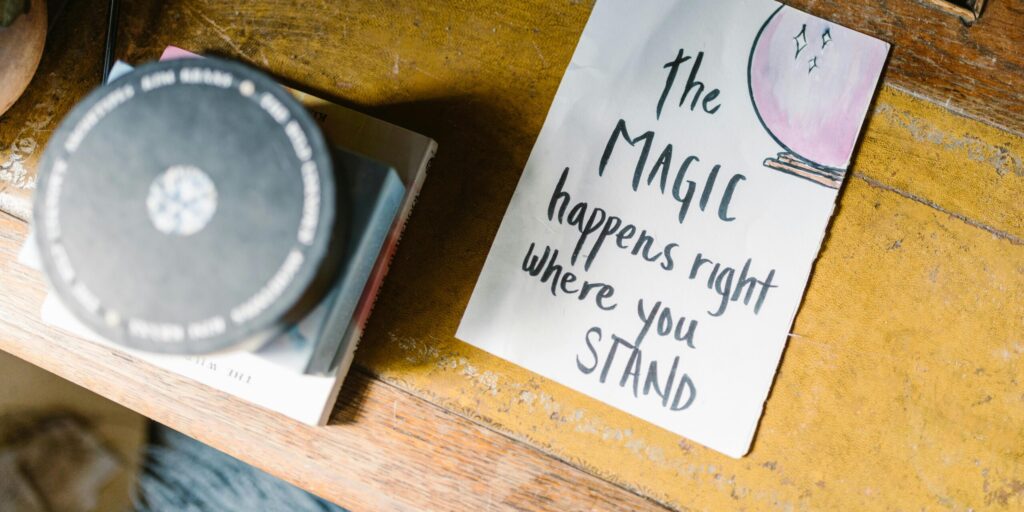Read time 7 minutes
Archith
At Ordinarily Rare, we feature voices that bring clarity and hope to those living with uncommon health journeys. One such voice is Guru Prakash Iyer, an Iyengar Yoga teacher based in Pune, Maharashtra. It is the city where B.K.S. Iyengar built his global legacy.
With years of experience in Iyengar Yoga therapy, Guru Prakash Iyer has guided patients with chronic illnesses and rare diseases. He shows how yoga can complement medical care. His approach emphasises:
Therapeutic Iyengar Yoga sequences, yoga props, alignment-based yoga therapy and pranayama.
In this contribution, he shares real-life case studies of patients. These patients found relief, dignity, and renewed confidence through Iyengar Yoga. His perspective highlights yoga not as a cure, but as a complementary therapy. He mentions that yoga can definitely be used to restore agency and improve quality of life.
We are honoured to feature his expertise on Ordinarily Rare. Let his insights guide patients, caregivers, and professionals to see yoga as a bridge between suffering and healing.
Over to: Guru Prakash Iyer, Iyengar Yoga Teacher
When Archith reached out, he suggested that since Iyengar Yoga is such a vast field, I should keep this piece focused on its role for rare and chronic patients. After all, that is what Ordinarily Rare is all about: bringing clarity and hope to those navigating uncommon health journeys. This blog may be a little longer than usual, but I promise it will be informative and worth your time.
Introduction: The Unexpected Path of Yoga Therapy

When I first began teaching Iyengar Yoga in Pune, I thought my role was simple. It was to help people perfect their asanas, to guide them toward balance and strength. But over the years, my classroom transformed into something much more profound.
Patients with chronic illnesses and rare diseases began arriving at my doorstep. Some came after exhausting every medical option. Others came because they had heard whispers of Iyengar Yoga’s therapeutic power. What I discovered was that yoga, when practiced with precision and compassion, could become a bridge between suffering and healing.
This blog is not a medical manual. It is a collection of stories, real lives touched by Iyengar Yoga.
My hope is that these stories will inspire patients, caregivers, and even doctors to see yoga not as an alternative, but as a complementary ally in healing.
Why Iyengar Yoga is Different
Before diving into the stories, let me explain why Iyengar Yoga is uniquely suited for those with chronic or rare conditions:
Props as Equalizers:
- Bolsters, belts, chairs, and ropes allow even the weakest patients to experience postures safely.
Therapeutic Sequences:
- Each sequence is designed for a specific condition, arthritis, scoliosis, autoimmune disorders, or even post-surgical recovery.
Alignment as Medicine:
- Correct alignment reduces strain, improves circulation, and balances the nervous system.
Gradual Breathwork:
- Pranayama is introduced gently. It helps regulate the autonomic nervous system without overwhelming fragile patients.
Unlike general yoga classes, Iyengar therapy is personalized and prescriptive. It is not about achieving the perfect pose but about finding the pose that heals.
Case Study 1: Meera and Ankylosing Spondylitis
Meera, a 34-year-old from Nagpur, came to me with ankylosing spondylitis. It is a rare autoimmune condition that stiffens the spine. Her mornings were filled with pain. The doctors had warned her that her mobility would only worsen.
We began with supported postures:
- Supta Baddha Konasana (Reclined Bound Angle Pose) with bolsters to open her chest.
- Setu Bandha Sarvangasana (Bridge Pose) with props to relieve spinal stiffness.
- Gentle Pranayama to deepen her breath and reduce inflammation.
Eight months later, her posture improved, her stiffness reduced, and her confidence soared. Her doctors were surprised, not because yoga cured her condition, but because it gave her back her agency.
Case Study 2: Arjun and a Rare Neuromuscular Disorder
Arjun, a 12-year-old from Hyderabad, was diagnosed with a rare neuromuscular disorder. Wheelchair-bound, he had limited control over his limbs. His parents had tried everything, physiotherapy, alternative medicine, even experimental treatments abroad.
We began with:
- Supported Viparita Karani (Legs-Up-the-Wall Pose) to improve circulation.
- Rope work to give him a sense of spinal elongation.
- Guided breathing to calm his anxiety and improve lung capacity.
Over a year, his muscle tone improved slightly, but the real transformation was emotional. He began smiling more, engaging with peers, and even teaching his parents simple breathing exercises. His condition remained, but his quality of life transformed.
Case Study 3: Ravi and a Rare Blood Disorder
Ravi, a 42-year-old from Pune, had a rare blood clotting disorder. Doctors warned him against strenuous activity, but immobility worsened his condition.
We designed a sequence of restorative asanas:
- Supta Virasana (Reclined Hero Pose) with bolsters to improve circulation.
- Adho Mukha Svanasana (Downward Dog) with ropes to reduce joint pressure.
- Supported Savasana with guided relaxation to reduce stress-induced flare-ups.
Over time, Ravi reported fewer clotting episodes and improved circulation markers. Yoga didn’t cure him, but it gave him a safe bridge between medical treatment and daily life.
Case Study 4: Kavita and Chronic Migraine
Kavita, a 29-year-old software engineer from Bengaluru, suffered from chronic migraines. Medication dulled her pain but left her fatigued. She came to me desperate for relief.
Her practice included:
- Adho Mukha Virasana (Child’s Pose) with support to calm the nervous system.
- Setu Bandha Sarvangasana with a bolster to reduce cranial pressure.
- Nadi Shodhana (Alternate Nostril Breathing) to balance her nervous system.
Within three months, her migraine frequency reduced by half. More importantly, she learned to recognize early triggers and use yoga as a preventive tool.
Case Study 5: Suresh and a Rare Lung Condition
One of my most challenging cases was Suresh, a 55-year-old retired teacher from Pune with a rare interstitial lung disease. His breathing was shallow, and he often felt suffocated.
We worked on:
- Supported Pranayama with bolsters under the spine to expand the chest.
- Ujjayi breathing to strengthen lung capacity.
- Gentle restorative inversions to improve oxygenation.
Over a year, his lung function tests showed modest improvement. His sense of vitality returned. He could walk longer distances and even resumed gardening.
Case Study 6: Jyoti and Post-Cancer Recovery
Jyoti, a 48-year-old from Mumbai, came to me after breast cancer treatment. Chemotherapy had left her fatigued, anxious, and with limited mobility in her shoulders.
Her practice included:
- Supported Gomukhasana (Cow Face Pose) to gently open her shoulders.
- Restorative Savasana to reduce fatigue.
- Gentle inversions to boost immunity and circulation.
Over time, Jyoti regained strength and reported sleeping better. More importantly, she said yoga gave her a sense of ownership over her body again after months of feeling like a patient.
Case Study 7: A Rare Skin Disorder
A unique case was Anil, a 37-year-old from Delhi with a rare autoimmune skin disorder that caused painful flare-ups. Stress was his biggest trigger.
We focused on:
- Restorative forward bends to calm his nervous system.
- Pranayama with cooling techniques like Sheetali.
- Meditative Savasana to reduce stress hormones.
Within months, his flare-ups reduced in frequency. His dermatologist noted that while medication remained essential, yoga had clearly improved his stress resilience.
Why Iyengar Yoga Works for Chronic and Rare Diseases
From these stories, I’ve observed unique benefits:
1. Nervous System Regulation:
Many rare diseases involve the autonomic nervous system. Iyengar Yoga calms overactive stress responses.
2. Improved Circulation and Immunity:
Inversions and restorative poses enhance blood flow and lymphatic drainage.
3. Pain Management:
Props allow patients to experience postures without strain.
4. Psychological Healing:
Patients often feel isolated. Yoga gives them a sense of belonging and empowerment.
New Insights for Readers
Here are some lesser-known aspects of Iyengar Yoga therapy:
- Props are not crutches; they are extensions of the body. Guruji B.K.S. Iyengar designed them to democratize yoga for the sick and elderly.
- Therapeutic sequences are time sensitive. Certain inversions are avoided during autoimmune flare-ups.
- Iyengar Yoga is data-driven. Decades of therapeutic case studies at RIMYI in Pune have informed medical collaborations worldwide.
- Rare disease patients often respond better than expected. Because the practice is individualized, it adapts where standard protocols fail.
Practical Tips for Patients and Caregivers

If you or a loved one is living with a chronic or rare disease:
- Find a Certified Iyengar Teacher: Therapeutic yoga requires expertise.
- Start with Restorative Poses: Even lying over a bolster can bring relief.
- Integrate Breathwork Slowly: Never force pranayama; let it unfold.
- Work with Your Doctor: Yoga complements, not replaces, medical care.
- Be Patient: Healing is not linear; progress may be subtle but profound.
Conclusion: Yoga as a Bridge, not a Cure
As I reflect on my journey in Pune, I realize Iyengar Yoga is not about curing rare diseases. It is about restoring dignity, reducing suffering, and giving patients tools to live fully.
Every time I see a patient smile after months of despair, I know yoga has done its work. Not by erasing the disease, but by reminding them that they are more than their diagnosis.
Iyengar Yoga is not just alignment of the body; it is alignment of hope, courage, and life itself.


